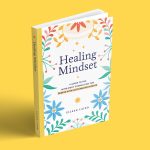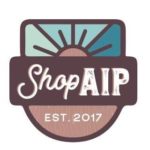
Visual and Written Journals ~ Processing the Autoimmune Experience
In the research, they call it expressive writing or art therapy. At home, we call it journaling. This simple practice is an amazing stress management and self-awareness tool. It helps release emotions that are difficult to let go, gain clarity to make difficult decisions, uncover hidden parts of yourself, express gratitude, discover playfulness, and simply honor and accept where you are in the moment. You don’t have to be a writer or an artist to keep a journal and gain these benefits. In this podcast, we’ll be focusing on using creative journals for autoimmune health. My guest is Olwen Wilson, a woman with autoimmune disease herself who also teaches the art of journaling.
Listen to the Show
- Subscribe to my podcast through your favorite podcast app: iTunes, Stitcher, Google, TuneIn, Spotify, Amazon, etc.
- You can also listen to the episode right here through the player below, and if you subscribe to my newsletter you’ll get notified of future episodes.
Podcast: Play in new window | Download
Show Notes
- Intro (0:00)
- Thank You to Our Podcast Sponsor – Paleo on the Go (2:27)
- A frozen meal delivery service, 100% of their menu is compliant with the elimination phase of the paleo autoimmune protocol (AIP). They have over 5o items, including entrees, side dishes, broth, AIP-friendly bacon, and desserts.
- Use the code PHOENIX for 10% off your first order.
- Meet Olwen (3:54)
- Olwen was diagnosed with rheumatoid arthritis in 2018. While her diagnosis came quickly, it took time for the medication to work, and her symptoms continued to worsen. At her worst, she lived with excruciating pain, extreme swelling, and physical/mental/emotional exhaustion. She would wake up in the morning and immediately need a nap. She needed help with many daily activities and also struggled with balance. She worried about how she would care for herself and her young child.
- Through her own research, she found the paleo autoimmune protocol. She experienced immediate improvements in energy levels, and the AIP also helped with pain and inflammation. While it didn’t eliminate her need for medication, the combination restored many abilities she thought were lost forever. It wasn’t just the diet that helped, but also lifestyle changes: managing stress, getting enough rest, and focusing on nutrient-density in her AIP food choices.
- Other treatments that made a positive difference were physiotherapy to restore strength and balance, and Vodder lymphatic massage.
- Olwen’s Personal Experience with Journaling (11:46)
- She got her first diary in 5th grade and wrote down her feelings and secrets, and then tore up the pages out of fear her sister or parents would read it.
- In the following years, she dabbled with both written and visual journals but never stuck with the practice long-term. She also found art journaling intimidating because she didn’t think she was talented enough. Then in 2018, she went on a week-long visual journaling retreat and loved it.
- She was diagnosed with RA one month after that retreat. The pain stopped her journaling practice, but her husband and friends reminded her how much she used to enjoy it. Could she do it again, even now? At first she was angry – they didn’t understand how much pain she was in. But then she decided to try, adapting techniques around her limits, and rediscovered joy in the midst of a painful life. Journaling also helped her slow down her swirling thoughts, and live in the present moment.
- Adapting Journaling Around Pain (16:05)
- When RA brought daily pain to Olwen’s life, she needed to adapt her practice around her body’s limits. Sitting at a table was uncomfortable, so she put some supplies in a pencil case and journaled from the couch. She also needed to take more breaks. Sometimes it would take a week to finish a page. She had to shift her expectations to her new reality, but it was worth it.
- While it’s natural to grieve the loss of favorite activities and rage at the pain, finding a way to adapt is incredibly empowering. It’s reclaiming something you love instead of feeling like everything is lost. Journals are also a great vehicle for expressing that grief and rage.
- Olwen also created new techniques she never would have found if she didn’t need to adapt. Restrictions, while painful, can inspire creativity.
- Journaling Research (19:37)
- In scientific studies, they call it expressive writing or art therapy. Here are two inspiring examples.
- One study asked people with irritable bowel syndrome to write about their deepest thoughts, emotions, and beliefs regarding the disease and its effects on their life. The result was a significant reduction in disease severity, and these were patients who had been suffering for years.
- Another study looked at the benefits of drawing among patients with a wide variety of illnesses. They asked patients to draw their disease or their symptoms. Not only did it benefit the patient, but if those drawings were shared with their healthcare practitioners, they provided a layer of insight that couldn’t be achieved through traditional health histories and lab tests. (Note: We’re not saying you need to share your journal with your doctor, but it shows how visual media sometimes expresses information that cannot be expressed through words alone.)
- Journaling as Self-Care (22:12)
- The beauty of a journal is that it’s 100% for you. You decide what goes in it. You decide written vs. visual vs. a blend of the two. It doesn’t need to be pretty. It’s not open to anyone else’s judgment. It’s uncensored. It’s complete freedom of expression. And for people who often put others’ needs above their own, this is a practice that allows you to focus on yourself for a change and see how that feels.
- Even when Olwen chooses to show her journal to someone, she’s not looking for their input. She’s sharing an expression of herself – that’s what a journal is. Establishing boundaries around her journal also inspired her to set boundaries in other areas of her life. Resource podcast: Ep. 118 – Boundaries and the Art of Saying No.
- Different Types of Journals (27:17)
- Journaling is a way to record your thoughts, feelings, wisdom, and reactions to your life. It’s a time to listen and observe your inner and outer worlds, and engage in a creative process without trying to make it “pretty”. The benefits of journaling come from the process – it’s not about the finished page.
- Written journals are obviously words on paper. Visual journals may be 100% art, but often they are a combination of words and images. The images can be drawings you make yourself, photographs, images cut out of magazines – anything you like. Sometimes a splash of color, shape, picture, or texture can express what words can’t.
- For Olwen, journaling is a “fun mess”. Express yourself, enjoy yourself, don’t censor yourself, don’t judge yourself.
- Thank You to Our Podcast Sponsor: ShopAIP (31:39)
- Today, I’m highlighting the AIPeazy products. They include an AIP-friendly Waffle and Pancake Mix, Pizza Crust Mix, Muesli, and Instant Hot Cereal. All of these are available through ShopAIP!
- ShopAIP is an online store dedicated to the Paleo Autoimmune Protocol. With hundreds of items for the elimination phase of the AIP, and new products labeled by reintroduction category as well. You can find protein bars, sauces and condiments, AIP-friendly spices, cooking and baking ingredients, delicious snacks, non-toxic skincare, and more.
- If you’re a first-time customer, use the code PHOENIX for 10% off your order. Purchase here.
- Journaling Supplies (32:55)
- While it can be fun to buy “all the things” when starting a journaling practice, it’s not necessary. You need very little to get started. Anyone on any budget can journal. In fact, limiting supplies can increase creativity. This is a trick that artists often use when they feel stuck – fueling creativity through restrictions. All you need to journal is something to write on, something to write with, and maybe a little bit of color.
- Household supplies you can use in your journal: a simple notebook, pens, pencils, your children’s art supplies, makeup, nail polish, food (ketchup, mustard, food coloring), leftover house paint, magazines (to cut out for collage), etc.
- Budget purchases: You don’t need to shop in an art supply store. Olwen buys many of her supplies at the dollar store: paints, markers, crayons, notebooks, etc.
- Optional art supplies: An art sketchbook with thicker pages, Tombow markers, Gelly Roll pens, pastels, waterproof pens (if you add art over your writing, the words won’t blur).
- 3 Journal Writing Exercises (36:51)
- When doing these exercises you can use writing, art, or a combination of the two. Olwen will often respond to journal prompts in writing first and add art as the second layer, sometimes on top of the writing itself.
- Exercise #1. Tune into a part of your body, and ask yourself: What’s the story here? You can answer this question from two different perspectives: What’s my story surrounding this part of my body? What’s my body trying to tell me?
- Exercise #2. Write about someone you see often but don’t know well (neighbor, store clerk, coworker). Ask yourself what is real vs. what is your imagination? When you’re done writing, look back and circle any words or passages that resonate with you in relation to your own life, and reflect on those over the next week.
- Exercise #3. Journal through your senses:
- Sight: What catches your eye? It can be a small detail or something large.
- Hearing: Is there a song lyric calling for your attention? When you sit in silence, what do you hear?
- Smell: What scent takes you back to a moment in your past, or reminds you of a specific person?
- Touch: What is the best thing you’ve ever felt against your skin? How can you add texture to your journal?
- Taste: What happens in your body when you think of tasting a lemon, chocolate cake, or spicy pepper? What memories pop up when you think of the best food you’ve ever tasted?
- Finding Joy in Difficult Times (45:57)
- Quote from Olwen’s blog: “My creativity and joy will not be taken away from me. They keep me here. They’re precious gifts that I’m protecting with everything I’ve got.”
- 2020 has been an intense year with world events, the pressures of the pandemic, racial injustice, economic worries, autoimmune pain, emotional pain. There are times in our lives when we feel like joy might disappear forever. Those are the times we need to seek joy the most.
- Journals can be fun and a great source of joy.
- Journals as a Vehicle for Grief, Rage, and Despair (48:23)
- While we want to seek joy in our lives, this doesn’t mean we need to repress our other emotions. Recently, someone told Olwen that her anger was beautiful, and it was so affirming to hear that. Journals are a great vehicle for all of our emotions. Olwen sees her emotions as messengers. Rather than running away from them, she pulls out her journal and gets curious. Why is that emotion here? Sometimes she gains clarity. Other times, she simply needs to feel it.
- Journaling about challenging emotions often reduces the intensity of those feelings. If the opposite happens and you feel overwhelmed, it’s fine to stop and take a break. Journaling is a wonderful healing tool, but it’s not the only one. Sometimes, we also need therapy to help us through challenging times, and that may be the message that emotion is sending.
- Online Visual Journaling Class (52:04)
- Olwen offers online classes multiple times per year. Her goals for the class are to help you reduce stress, gain clarity, dream for your future, and have fun.
- Her next one begins in October. If you miss this one, sign up for her newsletter to be notified of the next class offering.
- Her website is OlwenWilson.com.
- Outro (54:43)
- Eileen (your podcast host) is the author of multiple books, written to help people thrive with autoimmune disease. Learn more on the Books Page.
- If you like this podcast, follow or subscribe through your favorite podcast app. You can also subscribe to Eileen’s biweekly newsletter.
- Check out the entire archive of podcast episodes.
You May Also Be Interested In
Spreading the Word
If you like the podcast, please leave a positive review in iTunes. It would mean the world to me, and also helps others find the podcast. Here are some quick instructions using your iPhone:
- If you are already subscribed to my podcast: (1) Click the purple podcast icon. (2) At the bottom of the screen, click Library. (3) At the top of the screen, click Shows. (4) Click the Phoenix Helix podcast image. (5) Scroll down the page, and you’ll see Ratings and Reviews. Scroll down a little bit more and click on Write a Review. This will bring up the review screen. Tap 5 stars (if you love the podcast), and then click in the title box, and it will bring up the keyboard. Enter a title and short review. (6) Click Send in the upper right corner. (7) Thank you! Positive reviews give the podcast a higher search ranking in iTunes, helping people find it and letting them know it’s a quality podcast and worth their time to listen.
- If you haven’t subscribed to my podcast: (1) Click the purple podcast icon. (2) In the lower right corner, click the magnifying class. (3) Type Phoenix Helix in the search box. (4) Click the podcast cover in the Show list. (5) If you’d like to subscribe, click the + sign at the top of the screen. (6) To write a review, scroll down the page, and you’ll see Ratings and Reviews. Scroll down a little bit more and click on Write a Review. This will bring up the review screen. Tap 5 stars (if you love the podcast), and then click in the title box, and it will bring up the keyboard. Enter a title and short review. (7) Click Send in the upper right corner. (8) Thank you! Positive reviews give the podcast a higher search ranking in iTunes, helping people find it and letting them know it’s a quality podcast and worth their time to listen.







